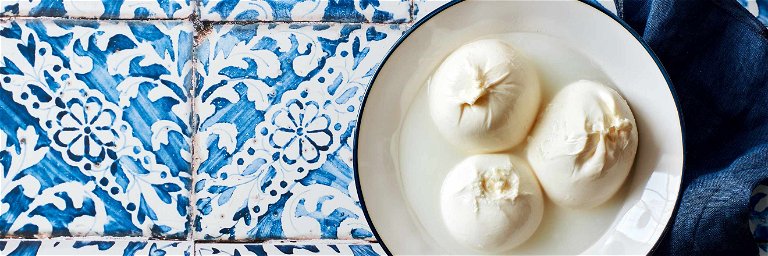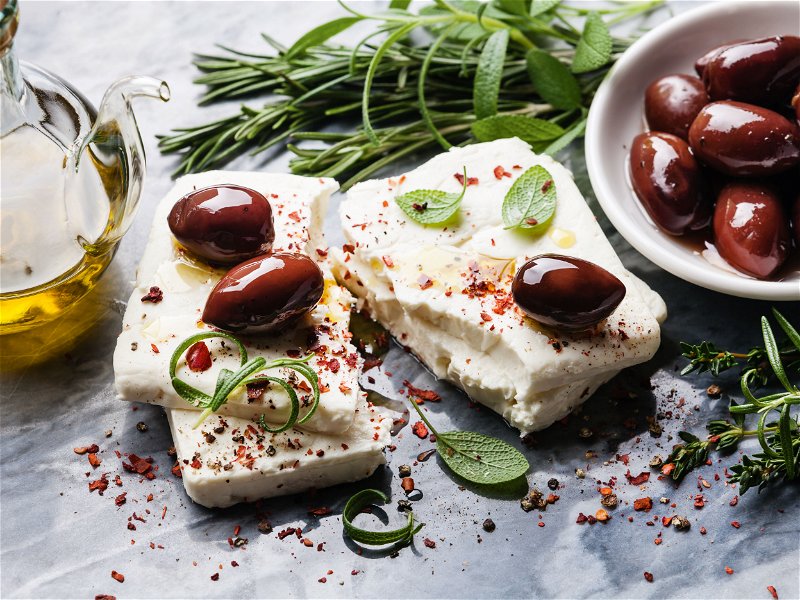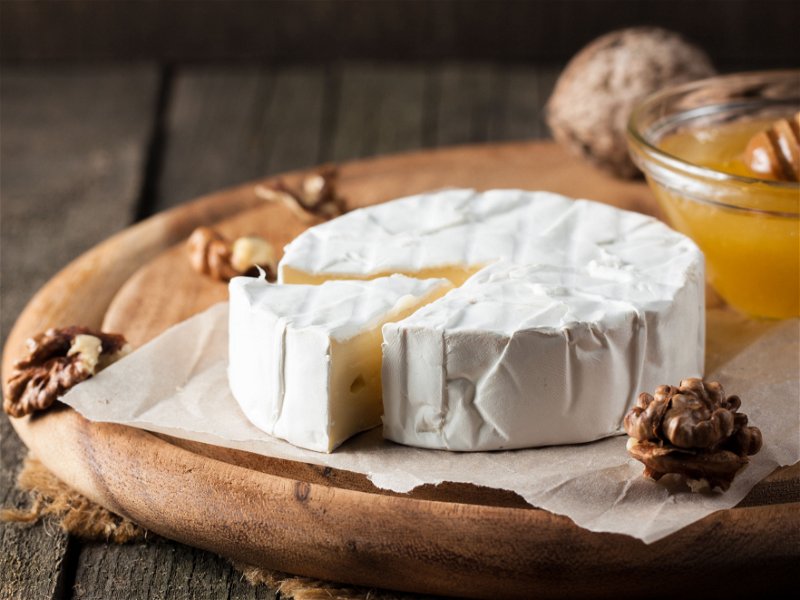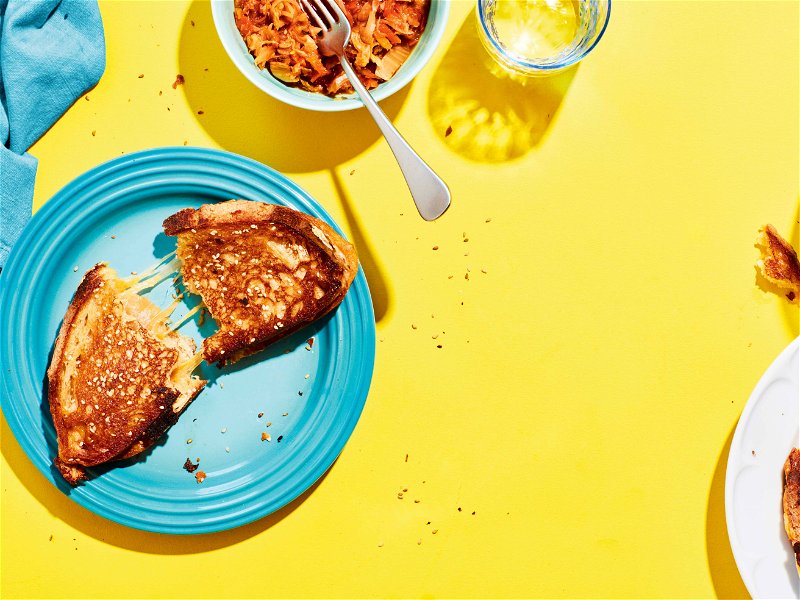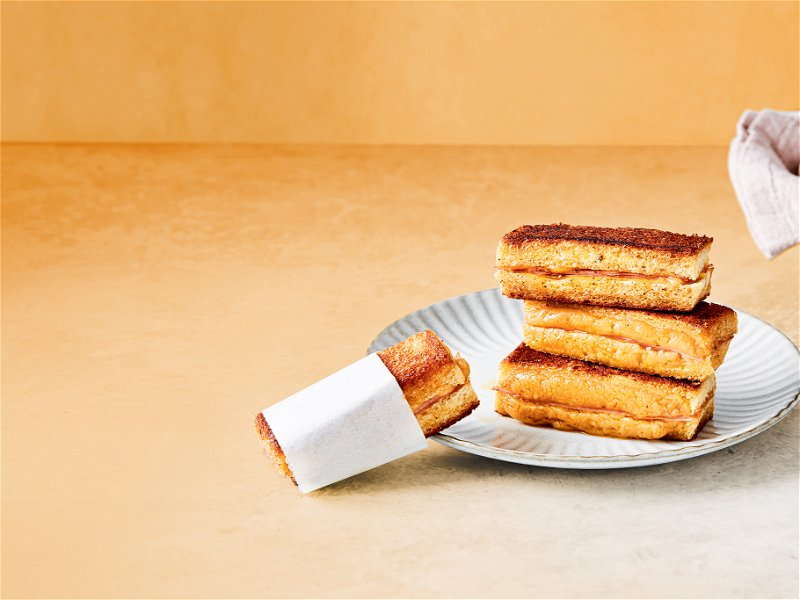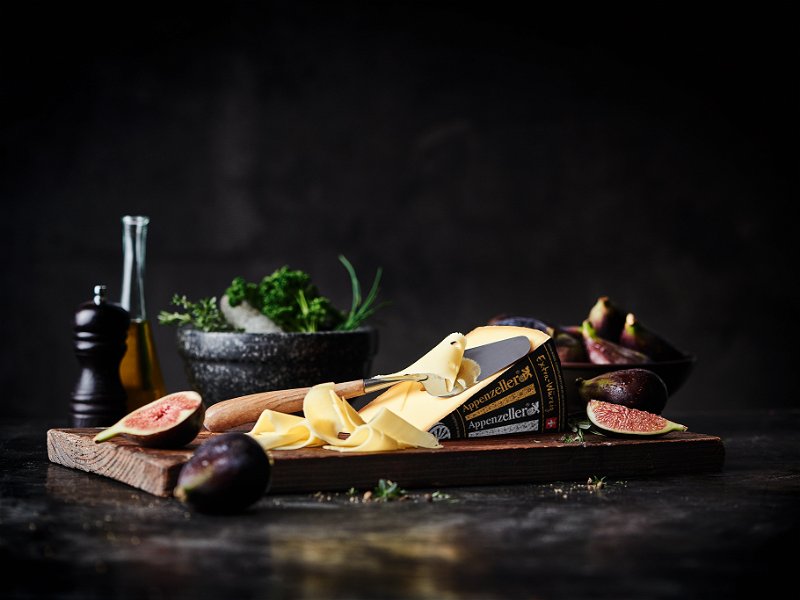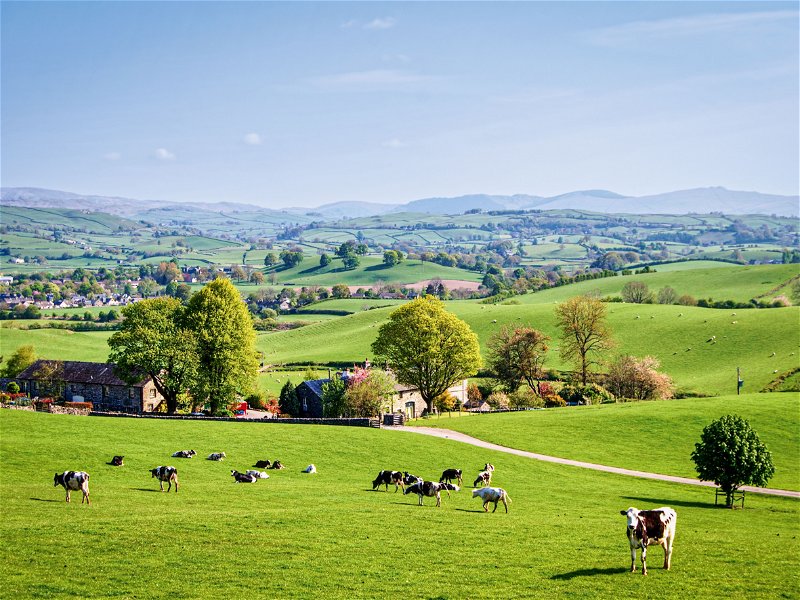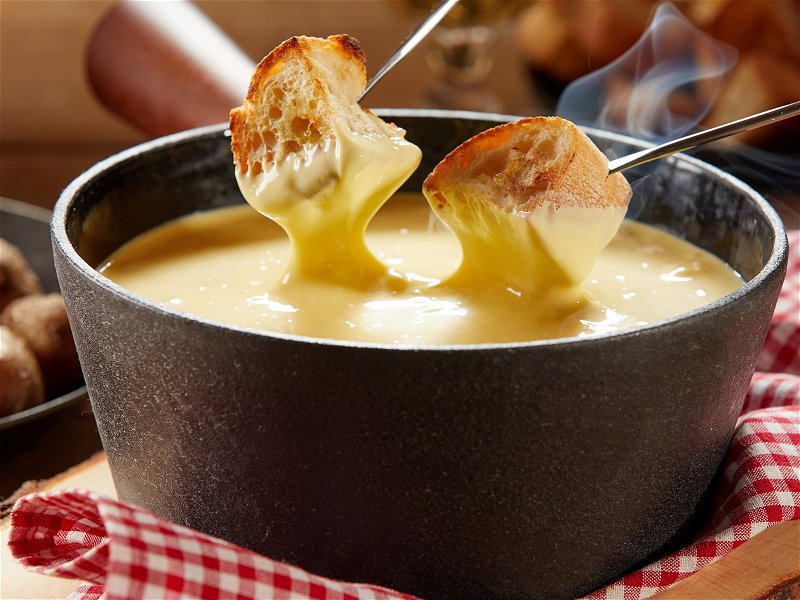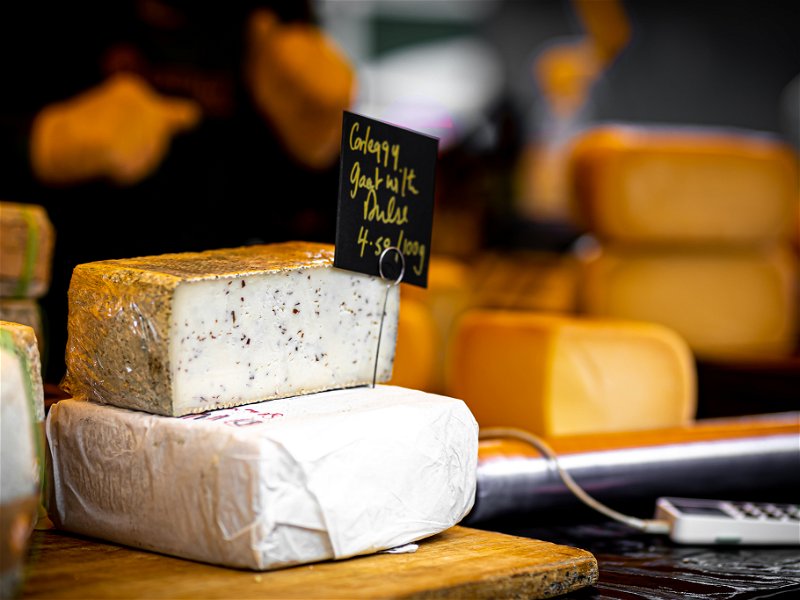Why we're mad about Mozzarella, Burrata, & Co.
Southern Italy's cheeses are world famous – do we need to say more than Mozzarella? Here is all you need to know about our favourite Italian cheese and its relatives.
Nobody really knows when, how or even why water buffalo arrived in Italy. The most likely theory is that they came in the 11th century with Arab traders to Sicily, then under Norman rule, and found their way to the mainland. One thing is certain: the soggy marshes and meadows of Campania, north and south of Naples were the ideal place for them to thrive. The locals quickly learned how to use the high-fat milk of these buffalo for making cheese. The monks of Capua and Aversa, two ancient cities on the plain of Caserta, served a buffalo milk cheese to their guests in the 12th century – and contemporary documents called them mozza. With time, both the animals and the cheesemaking spread further south, to Puglia, for instance, where buffalo milk cheese also is a speciality, especially Burrata. The rest is history...today Mozzarella is probably the most famous, popular and sought-after fresh cheese not just in Italy but the world.
The way of making Mozzarella has hardly changed in the past 800 years. The raw milk is heated to about 38°C, rennet is added to make it curdle. The curds are then separated from the whey and are brought to melting point in very hot water. This viscous, melting curd is then stretched and torn into pieces by hand – the Italian term for this is mozzare – hence the name of the cheese – and cooled in brine. The skill and art of making Mozzarella lies in judging the right temperature for stretching and cooling in order to achieve the perfect consistency.
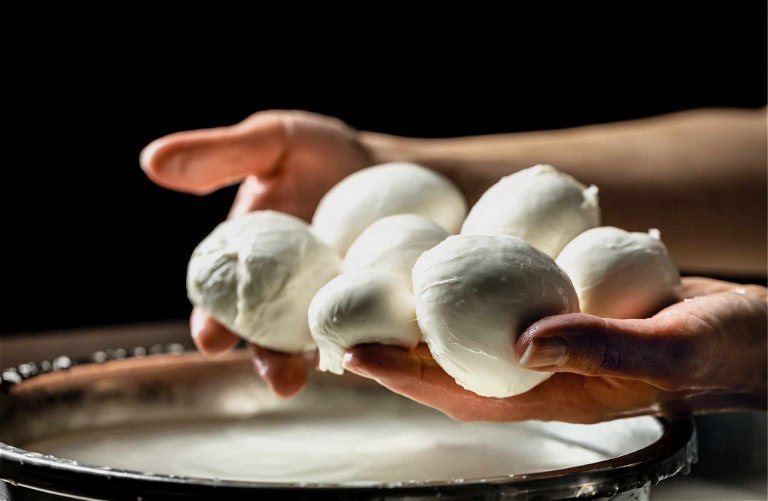
The move north
After Italian unification in 1861, Mozzarella production gradually moved to the industrialised north and to this day, most Mozzarella production is concentrated here in vast cheese dairies. In the hard post-war years of the mid-20th century, the artisanal production of Mozzarella almost disappeared in its southern Italian home – as the water buffalo were killed for their meat by a very hungry population. Production was only slowly revived in the 1980s. These small, southern producers find it impossible to compete with the industrial quantities of the north. Instead many aim for the highest quality to gain a competitive advantage.
But there are two schools of thought when it comes to making Mozzarella: that of Caserta in Naples’ north and that of Paestum, a coastal town about an hour south of Naples. The Caserta style is saltier, with a more pronounced taste while that of Paestum is milder, milkier and sweeter.
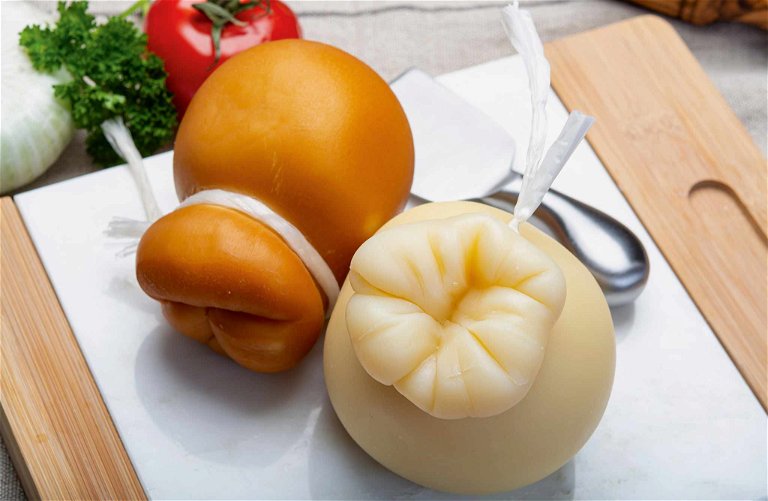
Opinions are split when it comes to deciding what good Mozzarella should really taste like. Some have an intense animal and farmyard tang while others taste of almost nothing. Some release a whoosh of delicious whey, others are dryer and more flaky. Some squeak a little when chewed – a sign of particular freshness – others can be eaten without making a sound. There is just one thing all southern Italians agree on, the cheese has to be absolutely fresh and should never, never, be refrigerated.
Cold temperatures destroy the fine texture and the subtle flavour of the cheese. Local artisanal shops keep the cheeses in troughs filled with whey. When a customer comes to buy, the cheese is ladled out into a plastic bag along with a little whey. Southern Italian supermarkets do not even refrigerate already sealed packages of Mozzarella and Fior di Latte.
If the Mozzarella is to be eaten on its own – and any proud Neapolitan would never do anything else apart from that with an artisanal cheese – it should not be older than a few hours. On the following day it can still be used for cooking – it is for this reason that Campanian cuisine has a wealth of recipes using Mozzarella that is no longer dew fresh. Or use our trick below and taste for yourself.
How to revive Mozzarella
If you're not lucky enough to live in Campania, you're likely to find it a bit tricky to find unrefrigerated mozzarella. Fortunately, there is a trick that gently awakens the cheese from the hibernation of refridgeration and revives both its flavour and consistency. Bring some water to about 50°C degrees in a saucepan (hot enough so that you can just about dip your finger in), place the mozzarella in its sealed brine packaging and let it warm through for about 20 minutes. Don't tell the southern Italians, but afterwards it tastes almost as good as fresh Mozzarella!
Southern Italian cheese: a primer
Mozzarella
By definition, the queen of fresh cheeses has to be made from buffalo’s milk – because otherwise it should be called Fior di Latte – thus the term buffalo Mozzarella is a tautology.
Fior di Latte
In southern Italy, unlike Mozzarella, it is not often shaped into a ball but into a square loaf that contains less whey which makes it better suited to pizza and cooking. The most famous Fior di Latte of Campania comes from Agerola and Vico Equense, two communes in the aptly named Monti Lattari – which literally translates as ‘milk mountains.’
Provola/Provolone
Matured Mozzarella, also made from buffalo’s milk, has a different, firmer consistency and often comes in a cone or skittle shape that is tied with string on which it is suspended for ageing. Provola also comes in a smoked version. It is eaten on its own as antipasto, or grated and stirred into pasta. Grilled slices of Provola can also be a main course. The difference between Provola and Provolone is merely size: Provola is smaller.
Scamorza
Matured Fior di Latte, i.e. the same thing as Provola but made from cow’s milk. It is often smoked and used in the same way as Provola.
Burrata
A Mozzarella that has been filled with fresh cream and straciatella, the left-overs from Mozzarella production: firm on the outside with a creamy, liquid core. Burrata is a speciality of the southern Italian region of Puglia, on the eastern coast.
Ricotta
Technically this is not cheese, since it is re-cooked whey (hence the name) in which remaining milk solids flocculate. It is used in cooking, in fillings for ravioli or lasagne, for instance, but it is also eaten raw, with honey drizzled over it. Ricotta can be made from cow’s, sheep’s, goat’s and buffalo’s milk – the fresher the better.

